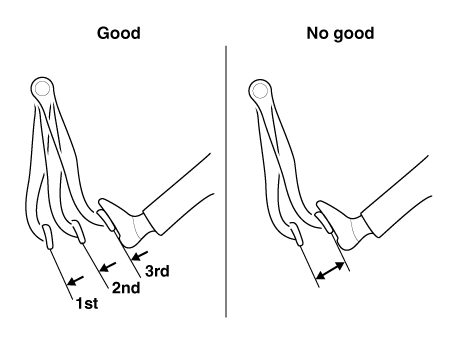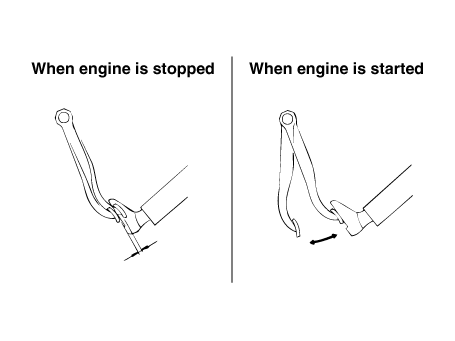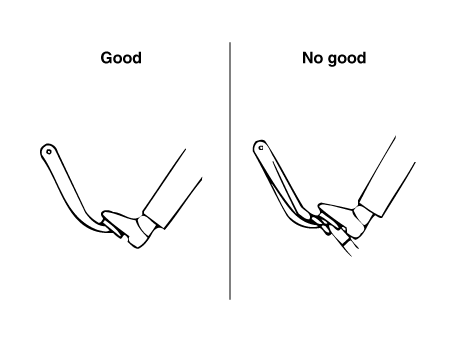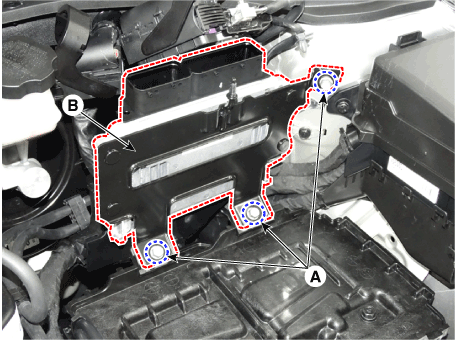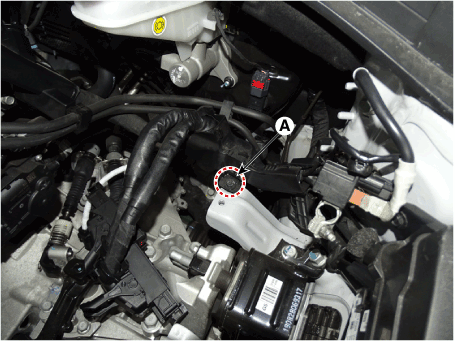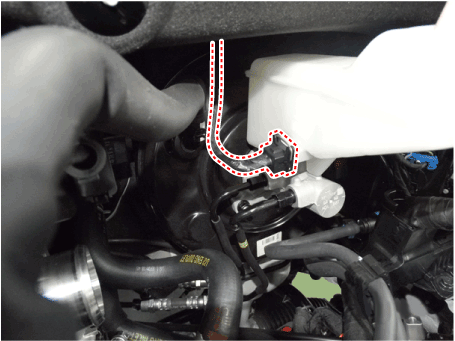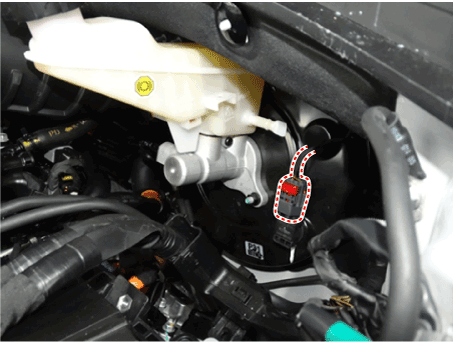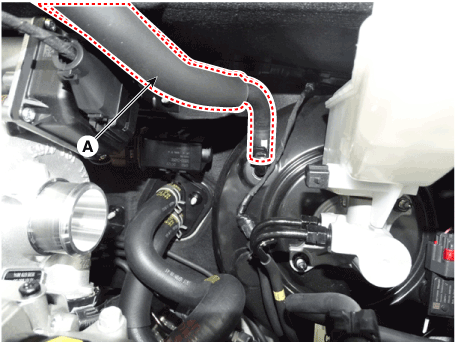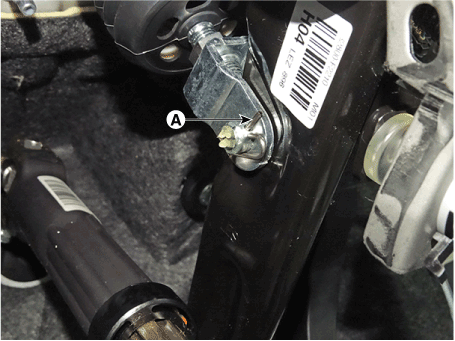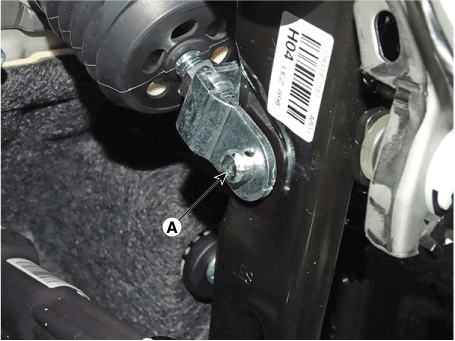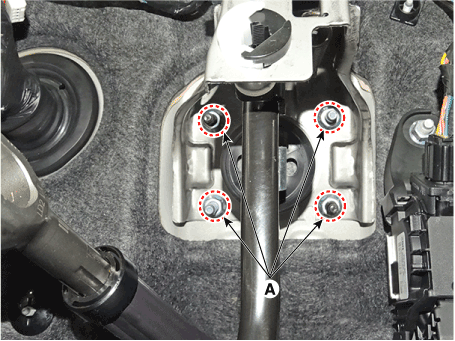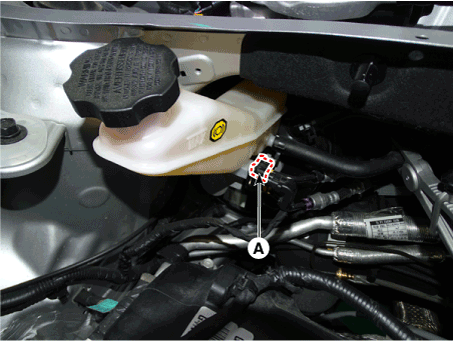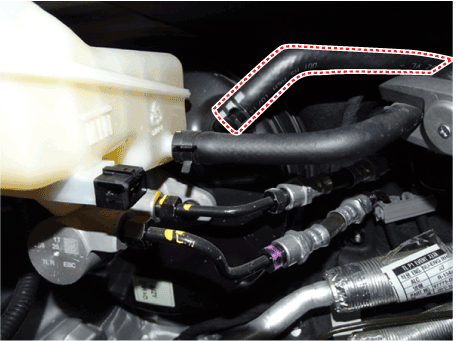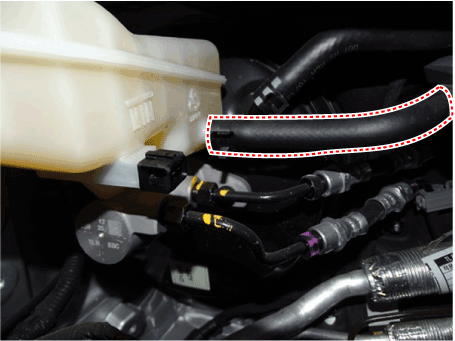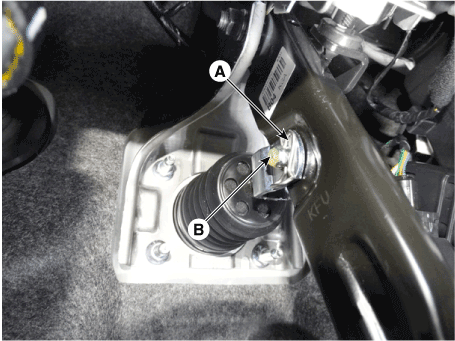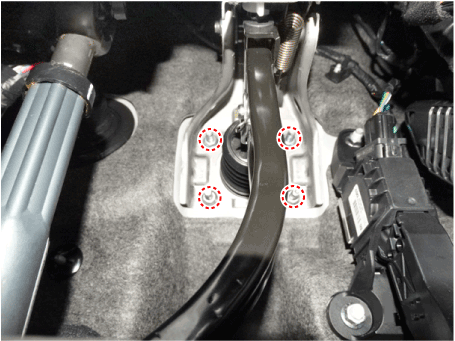Hyundai i-30: Brake System / Brake Booster
Components and components location
| Components |
| [LHD] |
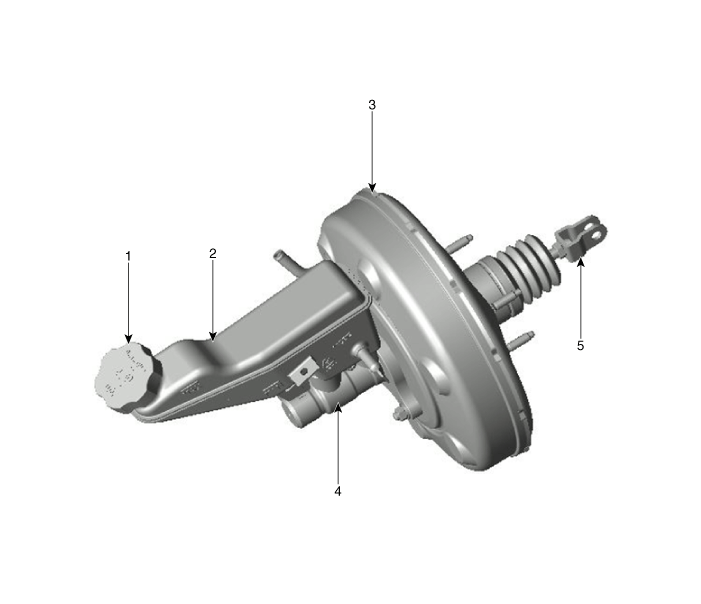
| 1. Reservoir
cap 2. Reservoir 3. Brake booster |
4. Master cylinder
5. Push rod |
| [RHD] |
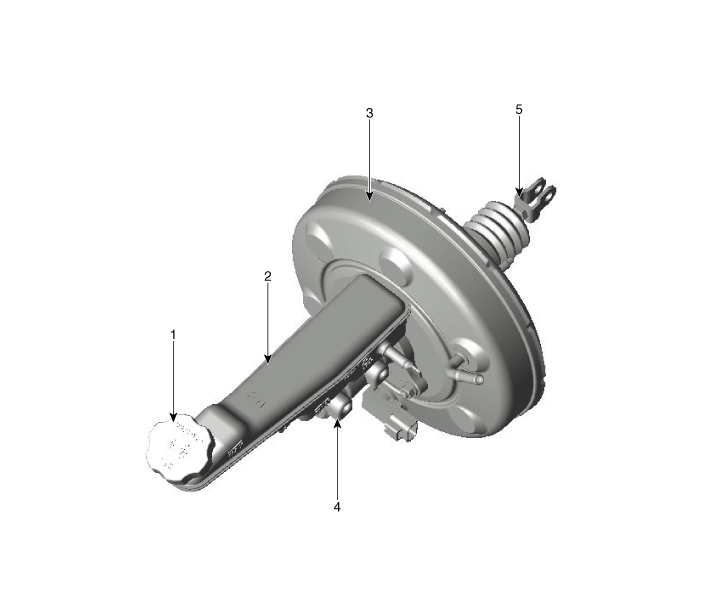
| 1. Reservoir
cap 2. Reservoir 3. Brake booster |
4. Master cylinder 5. Push rod |
Repair procedures
| Brake Booster Operating Test |
For simple checking of the brake booster operation, carry out the following
tests.
| 1. |
Run the engine for one or two minutes, and then stop it. If the pedal
depresses fully the first time but gradually becomes higher when depressed
succeeding times, the booster is operating properly, if the pedal height
remains unchanged, the booster is inoperative.
|
| 2. |
With the engine stopped, step on the brake pedal several times.
Then step on the brake pedal and start the engine. If the pedal moves
downward slightly, the booster is in good condition. If there is no
change, the booster is inoperative.
|
| 3. |
With the engine running, step on the brake pedal and then stop the engine.Hold
the pedal depressed for 30 seconds. If the pedal height does not change,
the booster is in good condition, if the pedal rises, the booster is
inoperative.
If the above three tests are okay, the booster performance can be determined
as good.
Even if one of the above three tests is not okay, check the check valve,
vacuum hose and booster for malfunction.
|
| Removal |
[LHD]
| 1. |
Turn ignition switch OFF and disconnect the negative (-) battery cable.
|
| 2. |
Remove the battery tray.
(Refer to Engine Electrical System - "Battery")
|
| 3. |
Loosen the mounting bolts (A) and then remova the ECM bracket (B).
|
| 4. |
Loosen the mounting bolt (A) and remove the wiring harness.
|
| 5. |
Disconnect the brake fluid level switch connector.
|
| 6. |
Disconnect the booster pressure sensor connector.
|
| 7. |
Remove the vacuum hose (A).
|
| 8. |
Remove the master cylinder.
(Refer to Brake System -" Master Cylinder")
|
| 9. |
Remove the snap pin (A).
|
| 10. |
Remove the clevis pin (A).
|
| 11. |
Remove the mounting nuts (A).
|
| 12. |
Remove the brake booster.
|
[RHD]
| 1. |
Turn ignition switch OFF and disconnect the negative (-) battery cable.
|
| 2. |
Disconnect the brake fluid level sensor connector (A).
|
| 3. |
Disconnect the vacuum hose from the brake booster.
|
| 4. |
Remove the brake fluid from the master cylinder reservoir with a syringe.
|
| 5. |
Remove the brake fluid hose from the reservoir. [M/T only]
|
| 6. |
Remove the brake master cylinder.
(Refer to Brake System - "Master Cylinder")
|
| 7. |
Remove the snap pin (A) and clevis pin (B).
|
| 8. |
Remove the mounting nuts.
|
| 9. |
Remove the brake booster.
|
| Inspection |
| 1. |
Inspect the vacuum hose.
|
| 2. |
Check the boot for damage.
|
| Installation |
| 1. |
To install, reverse the removal procedure.
|
| 2. |
After installing, bleed the brake system.
(Refer to Brake System -"Brake System Bleeding")
(Refer to Brake System - "ABS System Bleeding)
(Refer to Brake System - "ESP System Bleeding)
|
 Repair procedures
Repair procedures
Operation and Leakage Check
Check all of the following items :
Component
Procedure
Brake Booster (A)
Check brake operation by applying the brakes during a test drive...
 Vacuum Pump
Vacuum Pump
Components and components location
Components
[KAPPA PE 1.0, MHEV]
1. Vacuum pump
assembly
2. Wiring bracket
Components
[NEW-U 1...
Other information:
Hyundai i30 (PD) 2018-2025 Service Manual: Components and components location
..
Hyundai i30 (PD) 2018-2025 Service Manual: Seat Belt Pretensioner (BPT)
Components and components location Components 1. Front Seat Belt Pretensioner. 2. Rear Seat Belt Pretensioner. Description and operation Description The Seat Belt Pretensioners (BPT) are installed inside Center Pillar (LH & RH)...
Categories
- Manuals Home
- 3rd Generation i30 Owners Manual
- 3rd Generation i30 Service Manual
- Drive mode integrated control system
- Recommended lubricants and capacities
- Battery replacement
- New on site
- Most important about car
Power windows
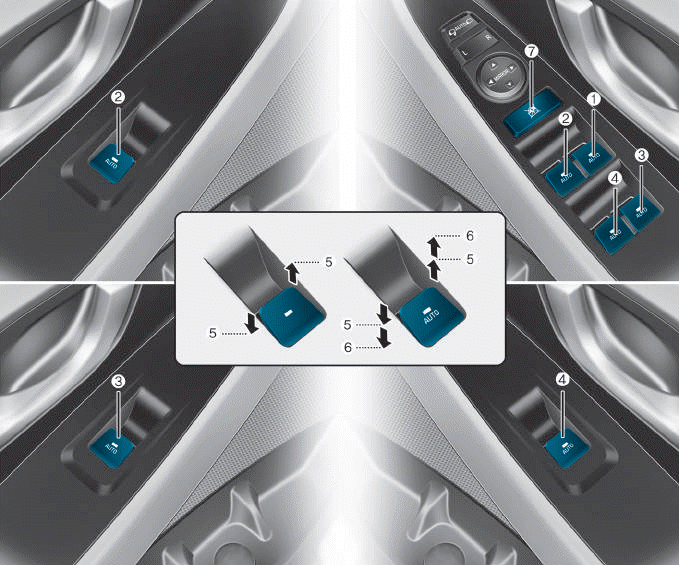
(1) Driver’s door power window
switch
(2) Front passenger’s door power
window switch
(3) Rear door (right) power window
switch
(4) Rear door (left) power window
switch
(5) Window opening and closing
(6) Automatic power window
(7) Power window lock switch
Copyright © 2025 www.hi30.net

